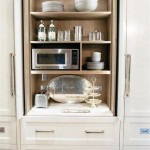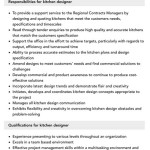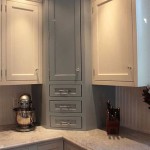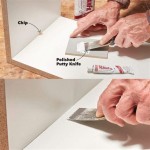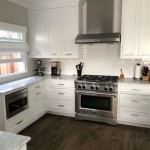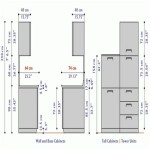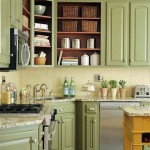Frameless Kitchen Cabinets: A Guide to Their Unique Features
Frameless kitchen cabinets, often known as Euro-style cabinets, have gained immense popularity due to their sleek and contemporary appearance. Unlike traditional framed cabinets, frameless cabinets feature doors and drawers that are flush with the cabinet box, creating a seamless and modern aesthetic. This guide explores the essential aspects of frameless kitchen cabinets, highlighting their advantages and providing insights into their construction and installation process.
Advantages of Frameless Kitchen Cabinets
Frameless kitchen cabinets offer several advantages over traditional framed cabinets, including:
- Sleek and Modern Design: Frameless cabinets provide a clean and contemporary look, enhancing the overall aesthetics of a kitchen. Their streamlined design complements various kitchen styles, from modern to minimalist.
- Increased Storage Space: The absence of a frame allows for more storage space within the cabinets. This feature is especially beneficial in smaller kitchens, where every inch of space counts.
- Ease of Access: Frameless cabinets often feature full-overlay doors and drawers, which provide a wider opening. This makes it easier to access items stored within the cabinets, improving functionality.
- Simplified Cleaning: The smooth and seamless surfaces of frameless cabinets make them easier to clean. The absence of intricate frames and moldings reduces the accumulation of dust and grime.
Construction and Installation of Frameless Kitchen Cabinets
Frameless kitchen cabinets are typically constructed using high-quality plywood or particle board. These materials provide structural stability and durability, ensuring the longevity of the cabinets.
The installation process of frameless kitchen cabinets involves several steps:
- Cabinet Box Assembly: The first step is to assemble the cabinet boxes. This involves securing the sides, top, and bottom of each cabinet using screws or nails.
- Hanging the Cabinets: The assembled cabinet boxes are then hung on the wall. This is typically done using a rail system or a combination of screws and brackets.
- Door and Drawer Installation: Once the cabinets are hung, the doors and drawers are installed. This involves attaching the hinges and drawer slides to the cabinet boxes and securing the doors and drawers in place.
- Finishing Touches: The final step is to add finishing touches, such as handles or knobs, to the doors and drawers. This completes the installation process and gives the cabinets a polished and functional look.
Additional Considerations
- Hardware: Frameless kitchen cabinets require specialized hardware, such as hinges and drawer slides, that are designed specifically for this type of cabinet. These components ensure smooth and proper operation of the doors and drawers.
- Cost: Frameless kitchen cabinets are generally more expensive than traditional framed cabinets. However, the added cost can be justified by the superior functionality and aesthetics that they offer.
Frameless kitchen cabinets offer a stylish and practical solution for modern kitchens. Their sleek design, increased storage space, ease of access, and simplified cleaning make them a popular choice among homeowners who prioritize aesthetics and functionality.

Everything You Want To Know About Frameless Cabinets Zeeland Lumber

Framed Vs Frameless Cabinets Bray Scarff

Framed Vs Frameless Cabinets What S Perfect For Your Project

What Are Frameless Kitchen Cabinets And They Right For Your Home

Frameless Kitchen Cabinet Building Guide Ana White

Cabinet Construction Framed V Frameless Craig Allen Designs

Frameless Cabinets Why They Are Perfect For Your Home

Inset Cabinets Vs Frameless

Frameless Cabinets Why They Are Perfect For Your Home

Frameless Cabinets High Gloss White Kitchen Oppolia
Related Posts


